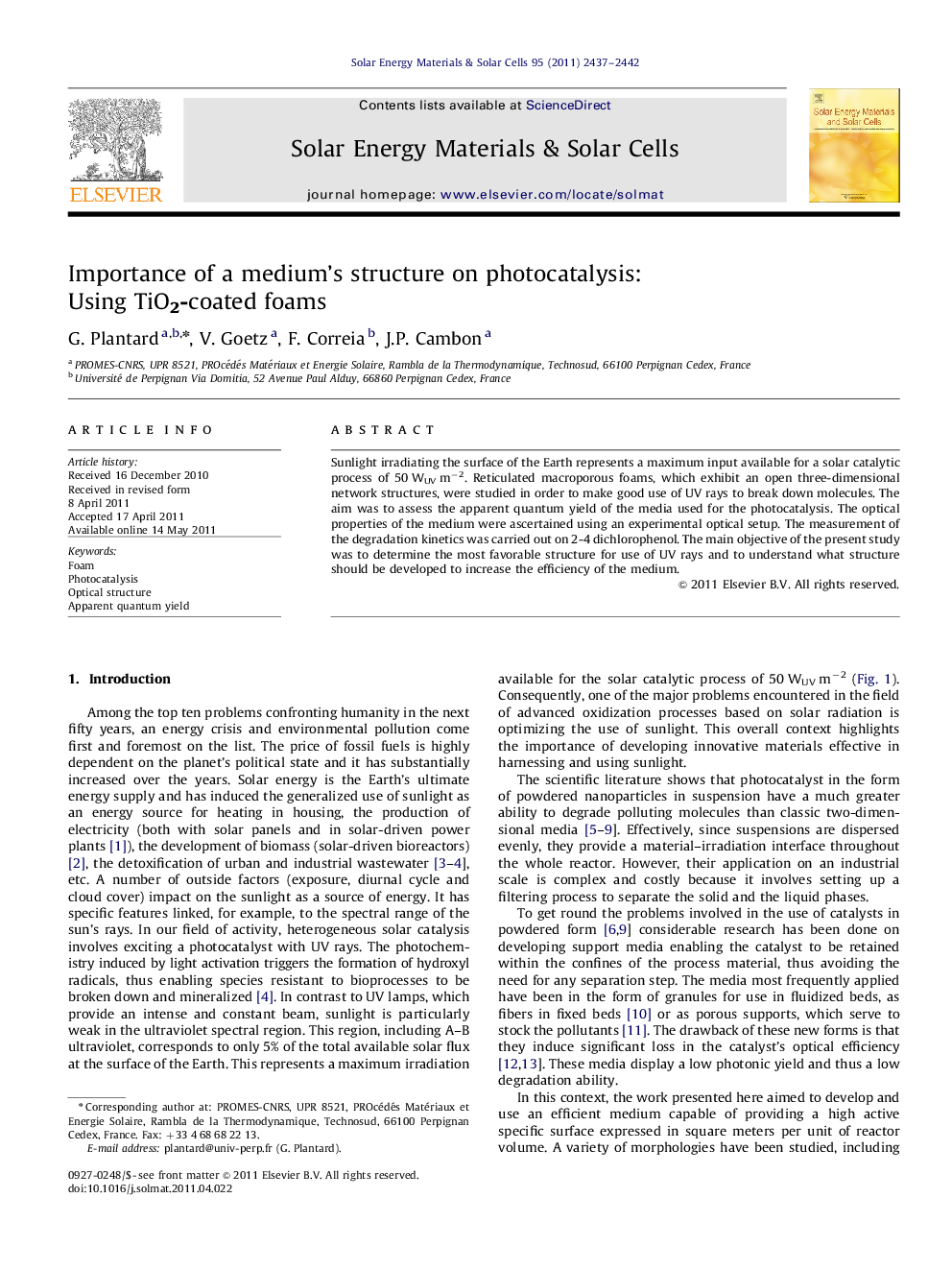| Article ID | Journal | Published Year | Pages | File Type |
|---|---|---|---|---|
| 78802 | Solar Energy Materials and Solar Cells | 2011 | 6 Pages |
Sunlight irradiating the surface of the Earth represents a maximum input available for a solar catalytic process of 50 WUV m−2. Reticulated macroporous foams, which exhibit an open three-dimensional network structures, were studied in order to make good use of UV rays to break down molecules. The aim was to assess the apparent quantum yield of the media used for the photocatalysis. The optical properties of the medium were ascertained using an experimental optical setup. The measurement of the degradation kinetics was carried out on 2-4 dichlorophenol. The main objective of the present study was to determine the most favorable structure for use of UV rays and to understand what structure should be developed to increase the efficiency of the medium.
Graphical abstractFigure optionsDownload full-size imageDownload as PowerPoint slideHighlights► We assess the apparent quantum yield of the media used for the photocatalysis. ► In this study, we show that the reactivity of the foam depends essentially on the quantity of light absorbed. ► Analysis demonstrates that the key factor in respect of solar catalysis is the surface collector of the light rays.
